What's New:
June 30, 2024: The King In Yellow
June 29, 2024: Rhan-Tegoth
JP Digital Art - Ancient Rome

Gladiatrix Major
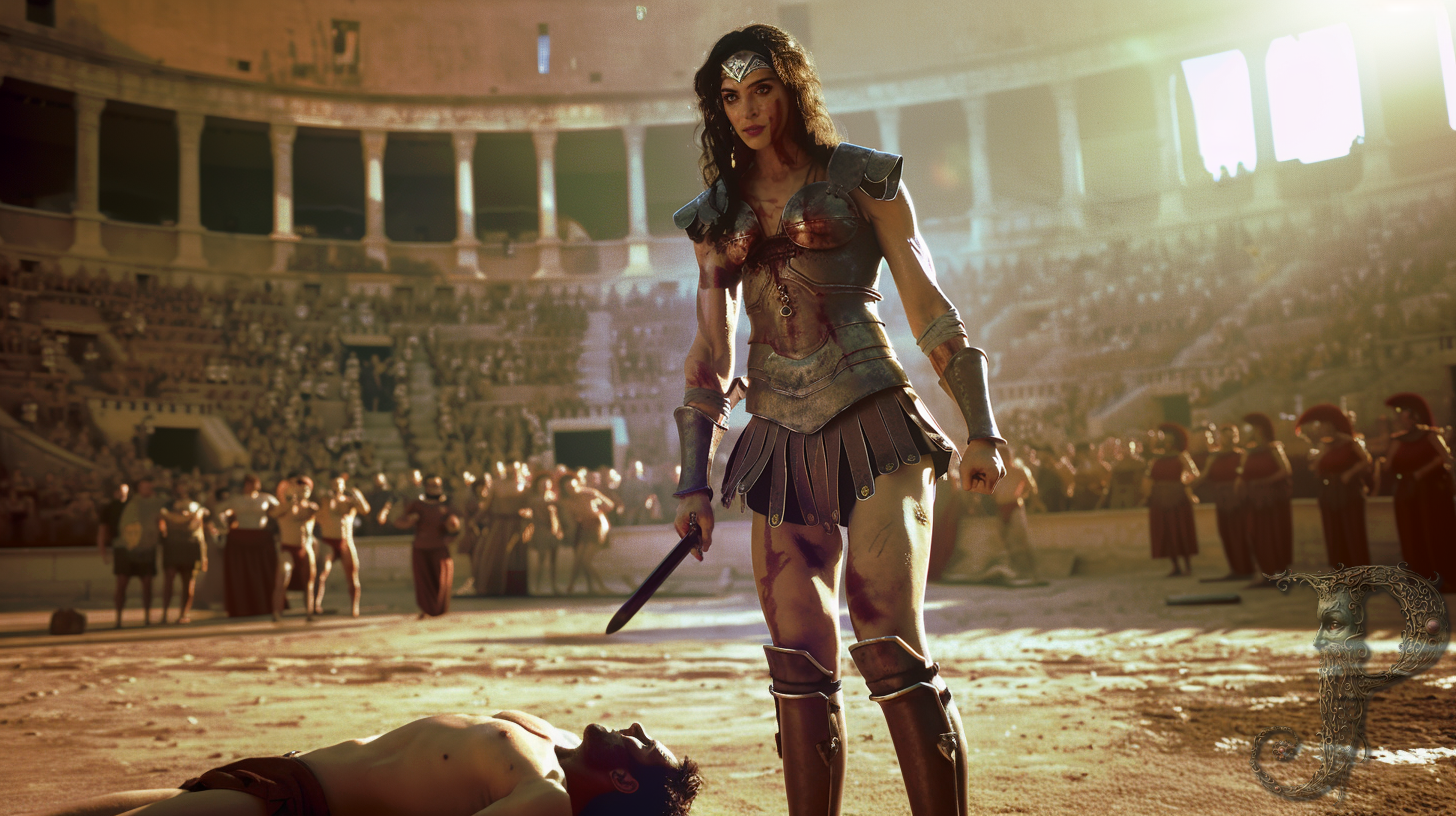
Female gladiators rarely appear in Roman histories, but they did exist. Like their male counterparts, they fought each other, or wild animals, to entertain audiences at games and festivals.
Fights between male and female gladiators remain unrecorded. In ancient Rome, there was a strong emphasis on patriarchal gender roles, with men being viewed as the dominant and superior gender. Allowing female gladiators to fight male gladiators may have been considered inappropriate or even scandalous, challenging the existing power dynamics within Roman society.
Free women who chose a life in the arena may have been motivated by a desire for independence, fame and financial rewards.
Fights between male and female gladiators remain unrecorded. In ancient Rome, there was a strong emphasis on patriarchal gender roles, with men being viewed as the dominant and superior gender. Allowing female gladiators to fight male gladiators may have been considered inappropriate or even scandalous, challenging the existing power dynamics within Roman society.
Free women who chose a life in the arena may have been motivated by a desire for independence, fame and financial rewards.
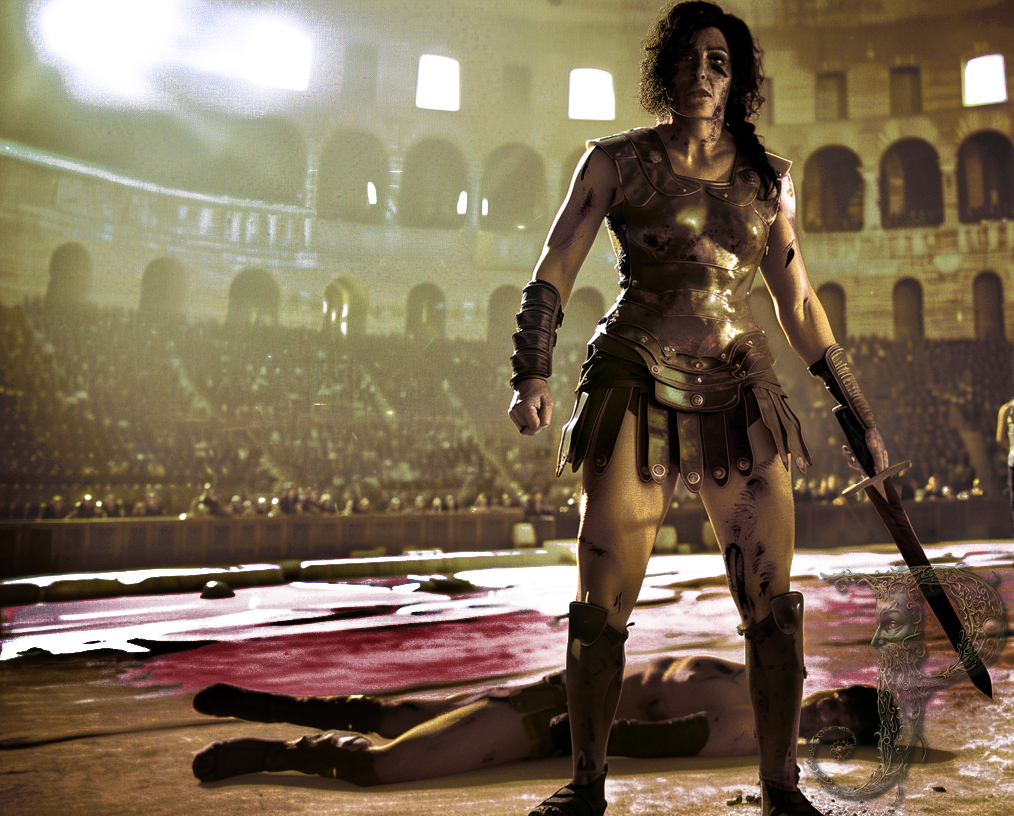
Becoming a gladiator, however, would probably not have been the big dream of most male or female Romans.
Although the fight did not usually end with the death of the loser, the lifes of gladiators were rather short, filled with suffering and hard training.
A lot of gladiators were forced to fight, because they were slaves. Only a few of them survived long enough to be freed from slavery and living their lives as free Roman citizens.
For the ancient Roman people gladiatorial games were a welcome change from the routines of their everyday lives, and they worshipped successful gladiators like today's rock stars or actors.
In our day and age, they're rightly rated as a horrible and savage tradition.
Although the fight did not usually end with the death of the loser, the lifes of gladiators were rather short, filled with suffering and hard training.
A lot of gladiators were forced to fight, because they were slaves. Only a few of them survived long enough to be freed from slavery and living their lives as free Roman citizens.
For the ancient Roman people gladiatorial games were a welcome change from the routines of their everyday lives, and they worshipped successful gladiators like today's rock stars or actors.
In our day and age, they're rightly rated as a horrible and savage tradition.
The fall of Pompeii
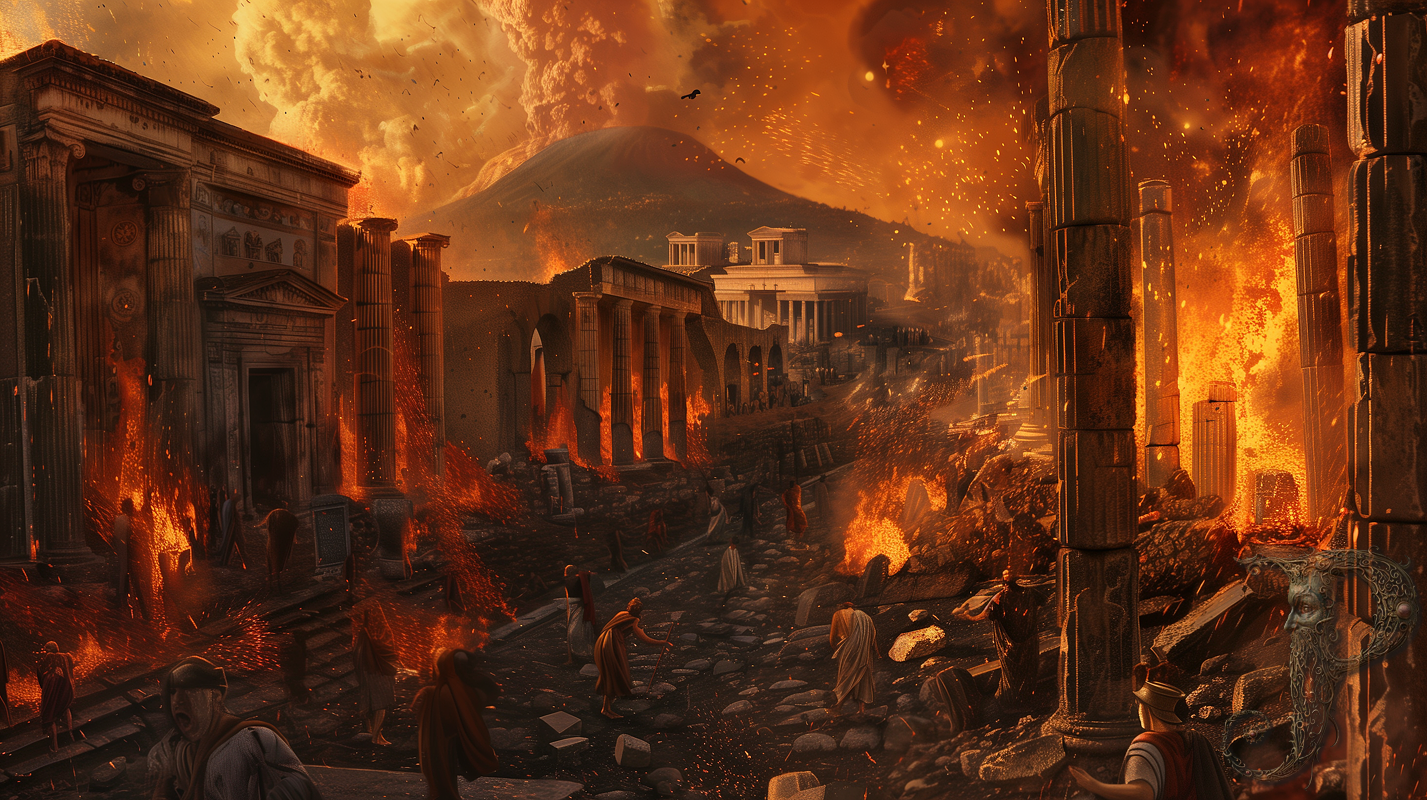
The eruption of the volcano Mount Vesuvius in 79 AD destroyed the Roman cities of Pompeii, Herculaneum, Oplontis, Stabiae and other settlements in the area of today's city Naples in Italy.
A lot of movies, documentaries and books have been made and written about this era, but in my opinion, the best way to experience this unique ruin sites is to visit the actual places first hand.
A lot of movies, documentaries and books have been made and written about this era, but in my opinion, the best way to experience this unique ruin sites is to visit the actual places first hand.
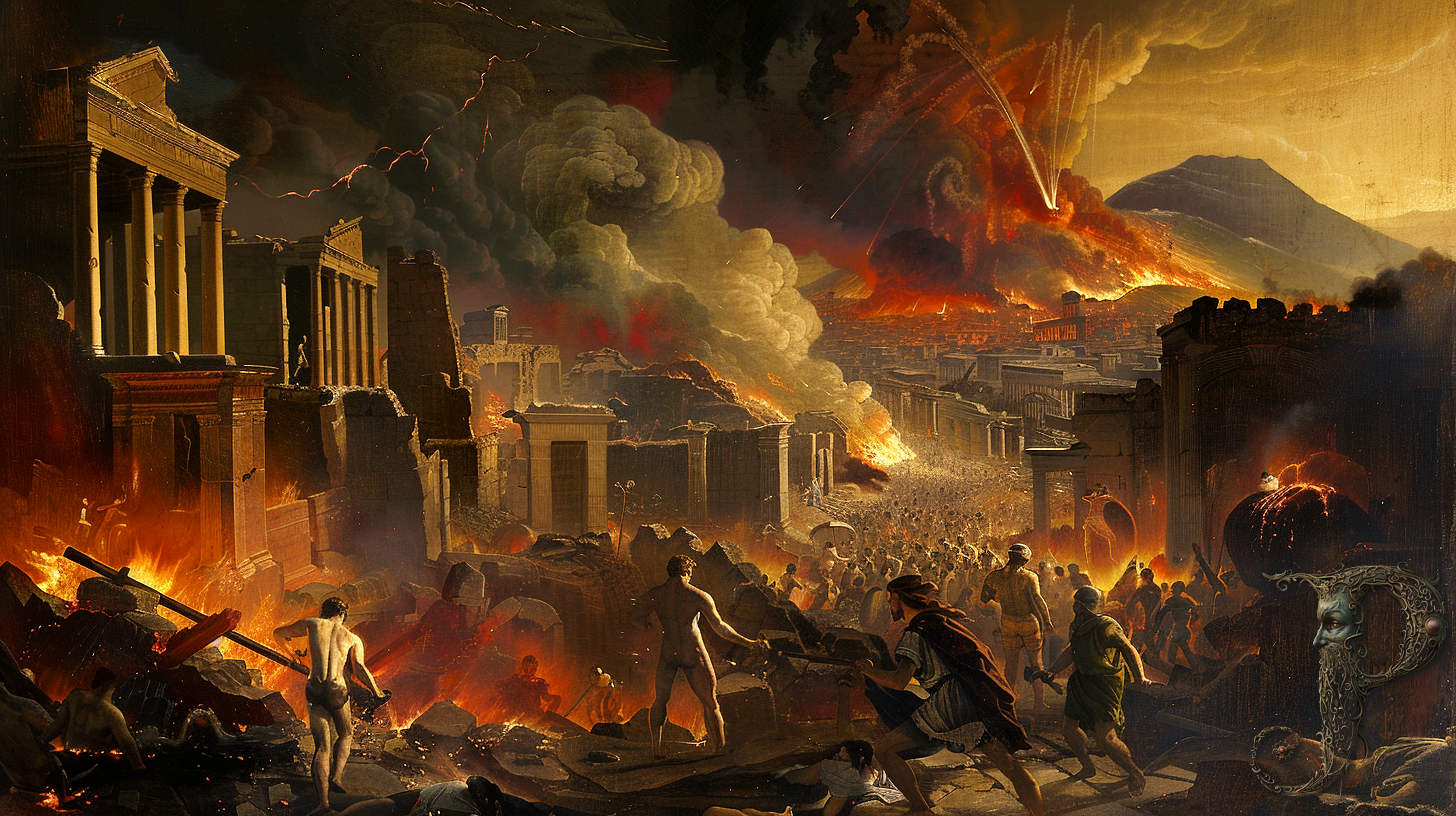
I've visited the Bay of Naples twice, and spent 4 weeks there overall. It's been an overwhelming experience, and it raised my excitement and interest in Ancient Rome and antiquity even further.
For this work I was inspired by "The Last Day of Pompeii", a historical painting by Karl Bryullov, created in 1830 – 1833.
For this work I was inspired by "The Last Day of Pompeii", a historical painting by Karl Bryullov, created in 1830 – 1833.
Slave market in Ancient Rome

In Ancient Rome, slave markets were central to the economy and society, as slavery was a cornerstone of Roman life. Slaves were acquired through conquest, piracy, trade, and debt bondage. Captives from military campaigns often entered the markets, where they were displayed and sold like commodities.

Slaves were categorized by skills, age, and physical attributes. Educated slaves or those with specialized skills fetched higher prices than laborers for agriculture, construction, or household work. The treatment of slaves varied widely, from brutal conditions in mines and fields to relatively better lives as domestic servants or skilled professionals.
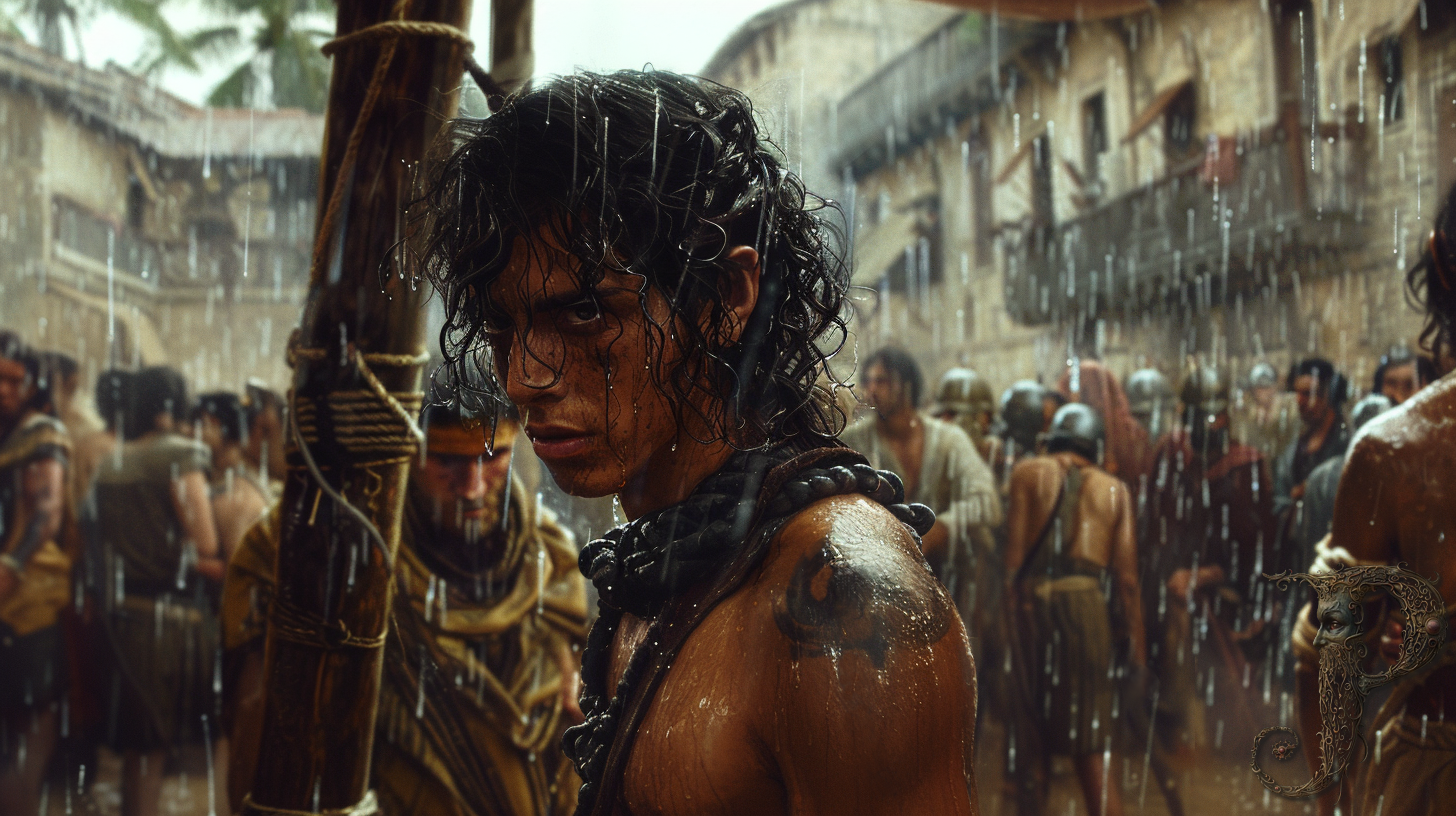
The system was highly exploitative, and it was integral to Roman infrastructure, enabling the empire's economic and cultural achievements. However, periodic revolts, such as the famous Spartacus rebellion, underscored the harsh realities of slavery.
Secret fountains of Caracalla

It ain't hard to imagine that the Roman emperor Caracalla, who built the famous public Baths of Caracalla in Rome, would want to have a giant site of luxurious private baths built just for himself - unknown to the public, hidden on a private island.
He surely had heard about the so-called Hanging Gardens of Semiramis, one of the Seven Wonders of the Ancient World, and would've used them as inspiration for his very own monument of flowing waters - just like I did in this rendering.
He surely had heard about the so-called Hanging Gardens of Semiramis, one of the Seven Wonders of the Ancient World, and would've used them as inspiration for his very own monument of flowing waters - just like I did in this rendering.
More coming up soon